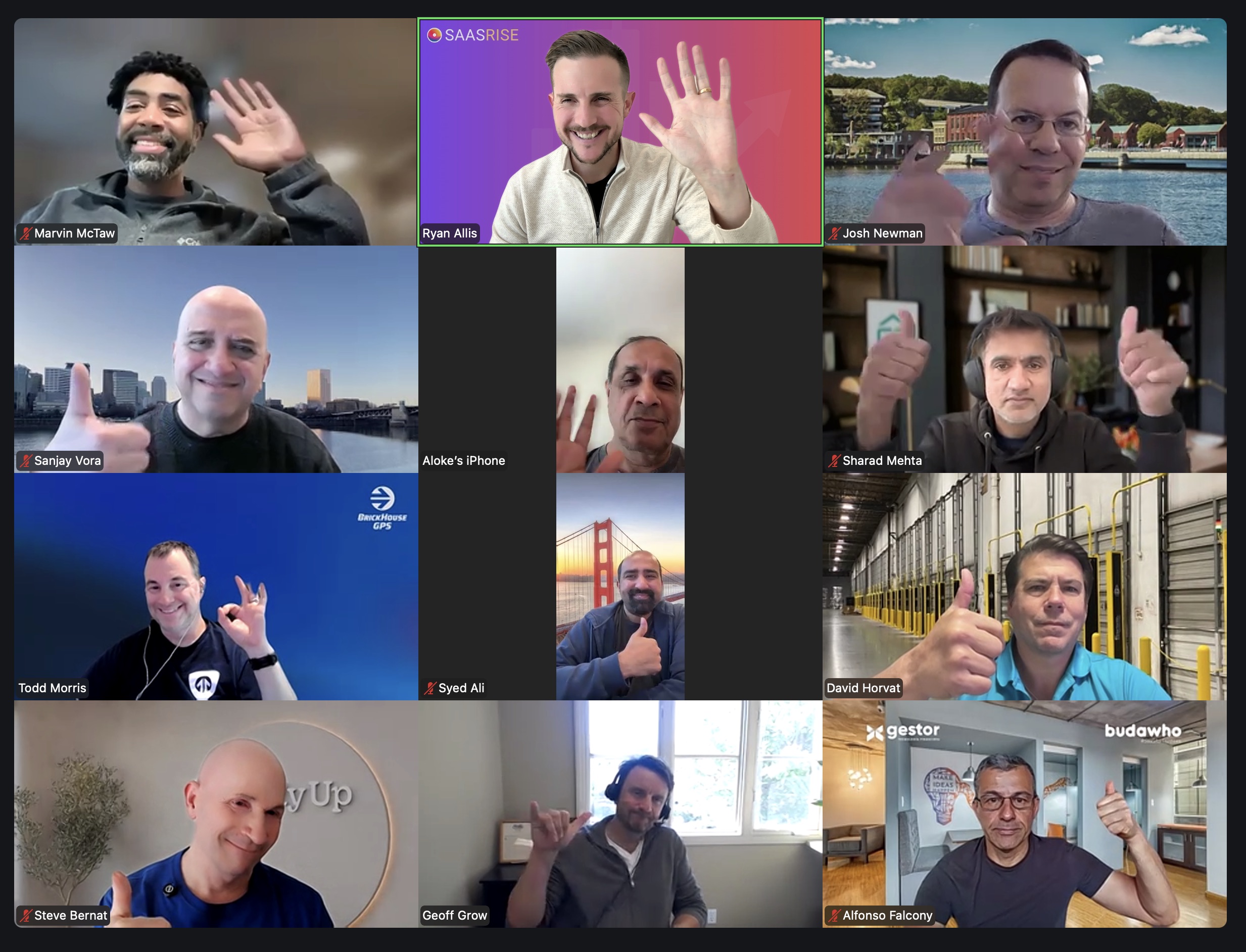
SaasRise Mastermind Recap - Oct 29, 2025
This recap brings together two in-depth founder discussions on scaling smarter — from building offshore marketing and sales support systems to shaping effective advisory structures, growth leadership, and roadmap strategies. It also explores how SaaS leaders are leveraging global talent and AI tools to streamline operations, strengthen go-to-market execution, and sustain momentum through complex growth phases.
Join us next week!
Topic 1: Offshore hiring for marketing/sales support, program options, and business impact discussions
Challenges:
- Lack of bandwidth to manage marketing platforms like Instantly for email campaigns
- Difficulty executing marketing strategies while maintaining existing customer relationships
- Concerns about finding qualified marketing personnel with right expertise
- Government shutdown affecting business decision-making and proposal timelines
- Communication barriers with offshore development teams
Advice given:
- Use Roocruit agency for hiring South African marketing professionals who have corporate experience and strong English communication skills
- Consider hiring T-shaped marketers with broad experience but specific expertise in areas like:
- Media buying (Meta ads, LinkedIn ads, Google Ads)
- Content creation and writing
- Project management
- Email campaign management and data list management
- Start with part-time roles (20 hours/week) to test fit before full commitment
- Bring new hires into the Growth Program cohort for proper training alignment
- Begin recruitment process early as it takes several weeks to shortlist and interview candidates
- Consider joining the comprehensive Growth Program for building internal marketing/sales competency
Topic 2: Board of Advisors Formation
Challenges:
- Uncertainty about value proposition of formal advisory boards
- Questions about compensation structure and equity allocation
- Concerns about time investment versus actual benefits received
Advice given:
- Consider informal advisory relationships instead of formal boards
- Offer 0.5–1% equity vesting over 4 years for advisors
- Focus on customer advisory boards for product feedback
- Use business coaches for accountability rather than formal boards
Key Takeaway: Most participants found informal advisory relationships and customer feedback more valuable than formal advisory boards.
Topic 3: Public Product Roadmap Strategy
Challenges:
- Deciding whether to publish roadmaps publicly or keep them private
- Balancing transparency with competitive concerns
- Determining best methods for collecting customer feature requests
Advice given:
- Implement “Request a Feature” buttons in product dashboards
- Use customer voting systems to prioritize features
- Create quarterly customer review sessions for roadmap feedback
- Maintain private roadmaps shared selectively with prospects and customers
Key Takeaway: Most successful companies use internal feature request systems rather than public roadmaps to gather customer input.
Topic 4: Head of Growth Hiring
Challenges:
- Difficulty finding qualified marketing talent within budget constraints
- Uncertainty about hiring domestically versus internationally
- Managing multiple outsourced agencies versus in-house teams
Advice given:
- Consider hiring overseas talent through agencies like Recruit for cost-effectiveness
- Use combination of in-house team members and specialized agencies
- Invest in training overseas team members through structured programs
- Budget $150–200K annually for experienced US-based growth leaders
Key Takeaway: Many successful companies build effective marketing teams using overseas talent combined with strategic agency partnerships.
Topic 5: AI Explainer Video Tools
Challenges:
- Need for efficient internal training video creation
- Balancing quality with time investment for internal communications
Advice given:
- Try NoteGPT for converting text/PDFs into explainer videos
- Consider Storylane for interactive product demonstrations
- Use Synthesia for AI avatar-based training content
- Explore Napkin AI for visual infographic creation
Key Takeaway: Multiple AI tools now exist to create professional explainer content quickly for internal training purposes.
Here are the tools recommended during the call:
- Google Forms – For collecting customer feature requests
- Fresh Desk – Customer service platform with built-in voting system for feature requests
- Bold Desk – Customer support ticketing system for managing product requests
- NoteGPT – Converts text/PDFs into explainer videos (up to 80 pages or 2,000 words)
- Storylane – Creates interactive product demonstrations with data obfuscation capabilities
- Synthesia – AI avatar videos for internal training and HR content
- Napkin AI – Generates visual infographics from text descriptions
- Roocruit.com – South African agency providing experienced B2B marketers ($2,700/month full-time)
- MarketerHire.com – Platform for hiring fractional marketing talent ($150K–$180K annually for half-time)
- Coach One – Business coaching service for accountability and leadership development
- Notion – Used for creating pseudo-private product roadmaps with voting capabilities
- Pulse.bot – AI-powered news filtering application (launching December, currently in beta)
- Marshall Group – LinkedIn connects, email marketing, and calling services
- Growth Program – 16-week comprehensive training system

